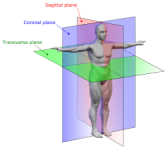It takes 15 aim points to make any shot on the long string near the pocket (ignoring some space at the top of the string to put a cue ball) - more on strings farther away. The drawing below shows how this is true, but it may take some staring and scratching to understand.
Each two contiguous balls (and any ball between them) can be made in the upper right corner pocket (5" wide) with the same cut angle. Each ball can be made with the cut angle of both balls contiguous to it. So they show when the angle must change and the maximum it can change without leaving any OBs that can't be made.
For illustration, the common cut angle for each of the first four pairs of balls is shown by lines of matched color (red, white, blue or white).
View attachment 159572
pj
chgo
Pat,
Do you have this diagram in a vector format? Like Corel Draw or something similar? If so would you mind emailing me a copy? I like how your diagram is set up.
